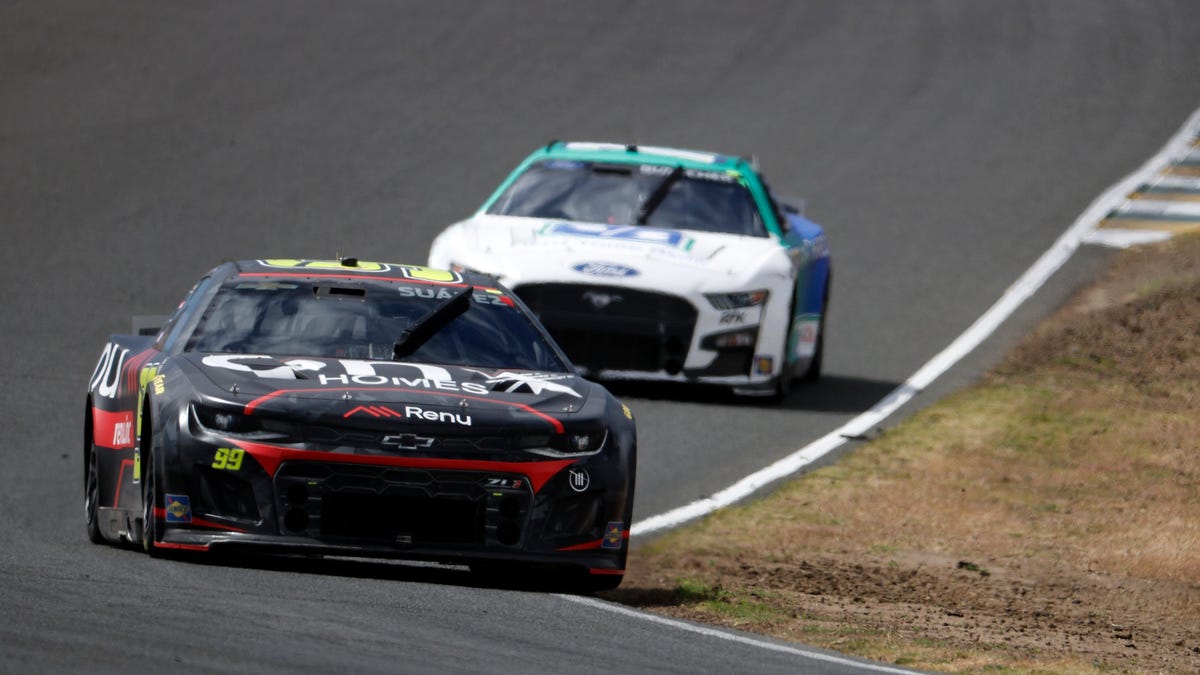The World's Simplest Guide to NASCAR Road Course Racing in 2022

Photo: Chris Graythen (Getty Images)
This weekend, international drivers from multiple disciplines will be taking on stock car racing with the NASCAR Cup Series at Watkins Glen. If you’re new to the NASCAR series because you’re looking to check out the likes of Kimi Raikkonen, Daniil Kvyat, or Mike Rockenfeller, then you’re in luck. We’re going to break down the stock car series so even new fans can enjoy the action.
What Is NASCAR?
At its most basic, the National Association for Stock Car Auto Racing, is an American racing series that finds its roots in illegal moonshine running and other on-track competition in the South. In it, “stock” cars — originally, cars that you could just buy right off the lot and lightly modify — compete for an ultimate championship.
Nowadays, stock cars are purpose-built for racing, though the shells of the cars are designed to mimic the cars you’d buy off the lot; this year, a Toyota Camry, Ford Mustang, and Chevrolet Camaro. The season consists of 36 points-scoring races, plus two exhibition events.
Don’t They Only Race on Ovals?
While NASCAR is predominately an oval-based racing series, the Cup Series has tried to expand its roster of road courses over the past years. Doing so is designed to help new fans grow interested in the sport, especially motorsport fans from other series. This year, there are six road courses on the schedule. Aside from Watkins Glen, the NASCAR Cup Series has competed at Circuit of the Americas, Sonoma Raceway, Road America, the Indianapolis Motor Speedway road course, and the Charlotte Motor Speedway Roval.
G/O Media may get a commission
Year-round basics
Uniqlo Summer Sale
Basics you don’t wanna miss
Uniqlo’s summer sales are not to be missed. The whole sale is killer to stock up on the basics Uniqlo is known for—subtle colors, classic silhouettes, and a dress up-or-down vibe.
What’s New About the Car?
This year, NASCAR has a brand-new car. Called the Next-Gen car, it’s designed to be a little more cost-effective for teams to purchase and build, and it brings back a whole host of stock parts that teams no longer have to manufacture in-house. The car is also designed symmetrically; in the past, NASCAR machines used to be angled to take advantage of the G-forces they experienced on ovals. Now that NASCAR is looking to increase the number of road courses it races on in a year, the symmetry is important.
How Does the Race Work?
The NASCAR Cup Series race at Watkins Glen will run for 90 laps, or 220 miles. Unlike other series, though, a NASCAR race isn’t run straight through; instead, there are stages.
In essence, a stage breaks the whole race up into three smaller races. The first two stages are shorter than the final stage; at the end of the final stage, NASCAR declares its race winner based on who crosses the finish line first. At the end of the first two, NASCAR throws a green-white checkered flag, and the winner of that stage is awarded points that can be used toward the Playoffs.
What are the Playoffs?
You’re likely going to hear a lot about the NASCAR Playoffs this weekend, since Watkins Glen is the penultimate round of the regular season. It’s OK if that all sounds Greek to you.
Instead of the standard motorsport championship, NASCAR has the playoffs. During roughly the first three-quarters of the season, drivers compete for wins and points like normal, but in that last quarter, the series switches to an elimination-style format that whittles away a select group of drivers. Every few races, the group of championship-eligible drivers whittles away, leaving a showdown for the final race of the season.
The Playoffs are designed to resemble other sporting formats, and it also creates a little extra bit of artificial excitement.
If you’re tuning in as a casual viewer, you don’t need to know much more about the Playoffs than that — but if you want to go deep, we’ve got a blog about it.
The Road Course Ringer and Other Lingo
You might hear the phrase “road course ringer” mentioned on the NASCAR broadcast. It refers to a driver that regularly wins on road courses, generally a non-NASCAR driver who only competes on road courses.
Other terms that might come in handy this weekend include:
Pit crew: the name given to the team of mechanics who change tires and add fuelCrew chief: a driver’s lead engineer who offers strategy to the crew and driver during a raceSpotter: people positioned throughout the track who inform the driver of their position on the race track, especially in reference to other driversStickers: brand-new tires that haven’t been used beforeScuffs: tires that have previously been usedOvertime: if a late-race crash causes a long delay, NASCAR will go into “overtime” by adding a handful of laps to the end of the race in the hope that it will finish under a green flagShort-pit: also known as an “undercut,” a short-pit refers to pitting well before you need tires or fuel in hopes of gaining a strategical advantage
How Can I Watch?
Here in America, the NASCAR Cup Series event at Watkins Glen will air at 3 p.m. ET on USA Network.



